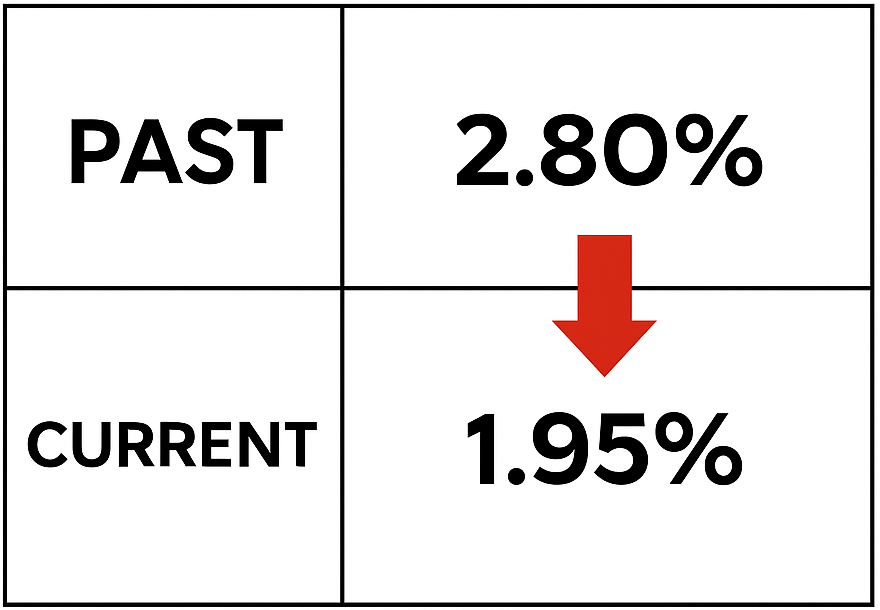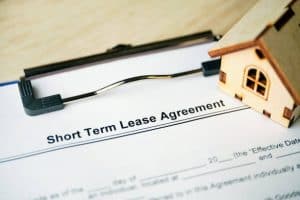Just collected your HDB keys? Congrats — your homeownership journey begins!
And if you’re already dreaming about hacking walls or laying down marble tiles, hold up.
Before the reno fun starts, it’s crucial to know what you can and cannot do in an HDB flat. Singapore has strict HDB renovation rules — and first-time owners often get caught out. One wrong move could cost you a permit delay, neighbour complaints, or even a hefty fine.
This guide breaks down the essential HDB renovation rules every new homeowner must know — from permit requirements and hacking restrictions, to working hours, bathroom rules, and the biggest mistakes to avoid.
Let’s help you create your dream flat — without breaking any rules (or your wallet).
What Renovation Works Require an HDB Permit
When it comes to renovating your HDB flat in Singapore, the golden rule is simple: just because you own the place doesn’t mean you can do whatever you want with it.
HDB flats are public housing, so there are strict renovation rules in place to ensure safety and structural integrity — especially when it comes to hacking, wet works, and anything that could affect your neighbours.
If this is your first time handling renovation permits, don’t worry — we’re breaking it down clearly below so you know exactly what needs approval, what doesn’t, and what could land you in hot water if you’re not careful.
Structural wall hacking, flooring, window and bathroom alterations that need approval
First up — anything that involves changing the structure or layout of your flat will usually require a renovation permit from HDB.
Here are some of the most common renovation works that require HDB approval:
Works That Typically Need an HDB Renovation Permit
| Renovation Work | Permit Required? | Notes |
|---|---|---|
| Hacking of structural walls | ✅ Yes | Must be non-load bearing; HDB may reject if unsafe |
| Changing floor finishes (e.g. tiles, vinyl overlay) | ✅ Yes | Especially for bathrooms or kitchens |
| Window replacements | ✅ Yes | Must use BCA-approved windows and licensed installers |
| Bathroom changes (e.g. repositioning toilet bowl) | ✅ Yes | Not allowed in BTO units within first 3 years |
| Replacing main gate or entrance door | ✅ Yes | Only if it affects fire escape route |
| Aircon piping or trunking | ✅ Yes | Requires HDB’s prior consent |
Expert tip: Always submit the proposed works with a clear floor plan. Use a licensed HDB renovation contractor to avoid permit rejection. You can verify licensed contractors via the Directory of Renovation Contractors (DRC).
Floor finishes—not exceeding prescribed thickness—and works exempt from permits
Not everything requires approval. In fact, some minor works are fully allowed without going through the HDB permit application process — as long as you follow the official guidelines.
Common Works That Don't Require an HDB Permit
| Renovation Work | Permit Required? | Conditions |
|---|---|---|
| Painting walls and ceilings | ❌ No | Use low-VOC paint, no special approval needed |
| Installing built-in wardrobes or cabinets | ❌ No | As long as no hacking or electrical rewiring involved |
| Laying vinyl flooring (non-permanent) | ❌ No | Must not exceed 50mm thickness |
| Changing non-load-bearing partition walls | ❌ No | Still must comply with fire escape regulations |
| Basic carpentry (e.g. feature walls, TV consoles) | ❌ No | Avoid sealing essential access points |
| Replacing toilet seat covers or taps | ❌ No | Plumbing stays untouched? No permit needed. |
⚠️ Heads up: Even if a permit isn’t needed, some works still have to follow HDB’s Code of Practice. For example, floor finishes in bathrooms must be non-slip and properly sealed.
Typical processing timeline and penalties for unauthorised works
Once your contractor submits your renovation permit application to HDB, the approval process generally takes about 1 to 3 weeks, depending on the scope of works.
Estimated HDB Renovation Approval Timelines Based on Work Type
| Type of Works | Estimated Approval Time |
|---|---|
| Simple non-structural works | 1–5 working days |
| Wet works (e.g. tiling, kitchen/bathroom) | 5-10 working days |
| Structural alterations (e.g. hacking) | 10–15 working days (or more) |
If you skip the permit and go ahead anyway, HDB takes it seriously. You may face:
- A fine of up to $5,000
- A mandatory reinstatement order
- Delays in resale (if unauthorised works are discovered during valuation)
- Potential issues when applying for insurance or financing
💡 Pro tip: If you’re buying a resale flat, always check if the previous owner had any unapproved works. This can affect your HDB home loan eligibility or delay your renovation plans.
Cost implications of permit delays and unauthorised works
Permit delays may seem minor at first, but they can create a ripple effect — delaying your contractor schedule, pushing back move-in dates, and even resulting in additional holding costs (like paying for your current rental a month longer).
Worse still, if you unknowingly carry out unauthorised works, you could be forced to:
- Pay out-of-pocket for professional reinstatement
- Re-apply with architectural drawings and Professional Engineer (PE) endorsement
- Delay any refinancing efforts you were planning with a DBS home loan or refinance HDB loan
✍️ It’s not just about following rules — it’s about protecting your money, your timeline, and your future property value.
Who You Can Engage: Contractor Licensing & Responsibilities
Here’s the deal — you can’t just hire any Tom, Dick, or uncle contractor for your HDB renovation. HDB has strict rules about who can carry out works in your flat, and ignoring this could get your permit rejected or even void your flat’s warranty coverage.
Let’s break down what to check before you sign that renovation quote — and how to avoid nightmare situations where the contractor disappears mid-project or cuts corners just to save cost.
Using only HDB‑licensed (BCA‑certified) renovation contractors from the official directory
If your renovation involves hacking, electrical works, wet works, or anything structural, HDB requires you to use a contractor from their Directory of Renovation Contractors (DRC).
This list includes only firms that:
- Are trained to follow HDB’s Renovation Guidelines
- Understand BCA and SCDF fire safety requirements
- Have a valid registration and a good record with no major infractions
⚠️ If you engage a non-licensed contractor, your renovation permit may be rejected, and you’ll be fully liable for any damage caused to your unit or surrounding flats.
To check if your contractor is licensed, visit HDB’s DRC portal and search by company name or registration number.
How to verify contractor experience, reviews and after‑sales track record
Even if a contractor is technically licensed, not all are created equal.
Here’s what we recommend before committing:
Checklist for Evaluating HDB Renovation Contractor Experience & Reliability
| ✅ What to Check | 🔍 Why It Matters |
|---|---|
| Past project portfolio | To ensure they’ve handled similar HDB layouts and styles |
| Google reviews + forums (e.g. Renotalk, Reddit SG) | Real feedback from previous clients reveals red flags |
| Whether they offer post-renovation servicing | Important in case of leakage, peeling laminate, or defects |
| Payment structure | Avoid contractors that demand 80% upfront |
| Clear written quotation and scope of works | Protects you if there are disputes later on |
🧠 Pro tip: Always meet in person. A trustworthy contractor will be transparent about materials, timeline, and renovation stages — and won’t shy away from explaining how HDB rules apply to your design.
Contractor’s obligations: proper permit submission, safety compliance and defect liabilities
Once hired, your licensed contractor isn’t just there to swing a hammer. They’re legally responsible for submitting your HDB renovation permit application, including:
- Accurate floorplans with red (demolition) and blue (addition) markings
- Ensuring structural safety and compliance with HDB’s Code of Practice
- Notifying neighbours and MCST where required
- Following noise control regulations and approved working hours
They must also:
- Use only licensed electricians and plumbers
- Follow SCDF’s fire escape and fire-rated door guidelines
- Be responsible for any damage caused during the renovation
⚠️ If your contractor skips these steps, you (the homeowner) bear the liability. So choose wisely.
What to include in your renovation contract to protect your finances
Let’s be honest — some contracts are just vague one-pagers with barely any terms. That’s a huge risk.
Here’s what you must include in your renovation agreement to stay protected:
Key Clauses to Include in Your HDB Renovation Contract to Avoid Financial Disputes
| Contract Term | Why It Matters |
|---|---|
| Detailed breakdown of works & materials | No guesswork = fewer disputes later |
| Staggered payment schedule (e.g. 10-40-40-10) | Prevents disappearing contractors |
| Renovation timeline with start/end dates | Keeps project on track |
| Warranty for defects (minimum 12 months) | For things like peeling, cracks, water seepage |
| Insurance coverage (public liability or home renovation insurance) | Required for high-risk works like hacking or plumbing reroute |
Planning to use a refinance HDB loan to fund your renovation? Make sure the contractor invoice is clear and itemised — banks may require it during disbursement or valuation.
Timing Rules: Renovation Hours, Notices & Scheduling
If you’ve ever lived next to a flat mid-renovation, you’ll understand why HDB enforces strict rules around renovation hours and noise control. Whether you’re doing a full overhaul or just hacking one wall, the timing of your renovation matters — not just for legal compliance, but also to keep the peace with your neighbours.
Let’s run through when works are allowed, who you need to notify, and how to plan your reno schedule so you don’t end up on the block’s WhatsApp blacklist.
Allowed working hours for general and noisy renovations
Renovation works in HDB flats can only be carried out during specific hours, and certain types of noisy works have even stricter limits.
HDB Renovation Working Hour Rules
| Type of Renovation Work | Permitted Days | Permitted Time |
|---|---|---|
| General renovation work (e.g. carpentry, painting) | Monday to Saturday | 9:00 AM – 6:00 PM |
| Noisy works (e.g. wall hacking, tile cutting, drilling) | Monday to Friday only | 9:00 AM – 6:00 PM |
| Sundays & Public Holidays | ❌ Not allowed | ❌ Not allowed |
Tip: If you’re doing hacking or major wet works, try to finish them early in your reno timeline — dragging noisy work into Week 5 or 6 is the fastest way to annoy your neighbours.
Advance notice to neighbours and building management
Before any hacking, drilling, or wet works begin, your contractor must:
- Put up a renovation notice outside your flat (HDB requires this)
- Inform the neighbours staying two units left/right and directly above/below
- In some cases (especially in DBSS or HDBs with condo-style MCST), you may also need to submit work details to the managing agent or security desk
Failing to notify your neighbours can lead to complaints, MCST intervention, or even HDB investigations.
🧠 Smart move: Give your neighbours a small heads-up note or even a WhatsApp text. A little courtesy can go a long way when the drilling starts.
How to schedule works to minimise neighbour complaints
Even when you follow HDB’s allowed working hours, renovation noise can still drive people nuts — especially if it’s dragged out over weeks or starts too early every morning.
Here’s how to plan your works smartly:
Best Practices for Scheduling HDB Renovation Works
| Scheduling Tip | Why It Helps |
|---|---|
| Front-load noisy works (hacking, drilling) in Week 1–2 | Gets the loudest parts done early and quickly |
| Group loud works into blocks (e.g. 2 full days instead of 5 scattered ones) | Reduces repeated disturbance |
| Avoid noisy work during lunchtime or exam periods (PSLE week, etc.) | Builds goodwill with neighbours |
| Plan deliveries, lifts, and wet works in advance with MCST | Avoid last-minute disruptions and complaints |
✅ Bonus tip: Keep a calendar of your contractor’s planned works and update your neighbours weekly. It shows you care — and makes complaints far less likely.
Bathroom & Wet Area Rules (Especially for BTO Units)
Your bathroom may be small, but it’s one of the most heavily regulated spaces in an HDB flat — especially if you’re renovating a BTO unit. That’s because water damage isn’t just an inconvenience… it’s a liability.
A poorly sealed tile or a wrongly placed floor trap can cause leaks into the unit below, leading to complaints, repair claims, and even renovation delays. To avoid that mess (literally), here’s what you need to know before touching any wet area in your flat.
Why BTO bathrooms can’t be renovated within the first 3 years
If you’re renovating a BTO flat, you’re not allowed to hack or retile your bathroom floor and walls for 3 years from the date of key collection.
Why? Because HDB has already applied a pre-installed waterproofing membrane, and any interference could compromise it.
During this 3-year restriction, you cannot:
- Replace bathroom floor tiles
- Hack wall tiles
- Move your toilet bowl or change floor trap positions
⚠️ If you break this rule, HDB can issue a Stop Work Order and require you to reinstate the entire bathroom at your own cost.
This rule doesn’t apply to resale flats, but even then, waterproofing guidelines still need to be followed.
Waterproofing requirements and the soak test procedure
Whether you’re renovating a BTO (after 3 years) or a resale HDB unit, waterproofing integrity is non-negotiable.
Before your renovation is approved, and again before handover, your contractor may be required to perform a soak test:
Waterproofing Rules for HDB Bathrooms
| Waterproofing Procedure | Purpose |
|---|---|
| Apply new waterproofing membrane after hacking | Prevent water seepage into lower units |
| Conduct “soak test” (flooding the floor area for 24–48 hours) | Check for leakage before tiling or sealing |
| Submit test results if requested by HDB inspector | Proof of compliance for high-risk wet areas |
Tip: Always use a contractor who knows HDB’s updated waterproofing process. If water seeps through due to poor workmanship, you could be held liable for neighbour unit damage.
Rules for floor finishes, toilet bowls, and drainage systems
Even if you’re not hacking the bathroom, there are still rules around the materials and fixtures you choose — especially for safety and drainage.
Here’s what’s allowed (and what’s not):
HDB Rules: Bathroom Floors, Fixtures & Drainage
| Item | Allowed? | Key Rule |
|---|---|---|
| Anti-slip floor tiles | ✅ Yes | Required for all wet areas |
| Vinyl flooring over tiles | ✅ Yes | Only if waterproofing is not compromised |
| Moving toilet bowl | ❌ No | Prohibited unless approval granted and pipework allows |
| Relocating floor trap | ❌ No | Drainage flow must follow original design |
| Installing bathtubs or raised platforms | ✅ With caution | Must not obstruct drainage or exceed height limits |
Expert advice: Keep all major sanitary fixtures (toilet, sink, floor trap) in their original locations unless absolutely necessary. If needed, your contractor may need to engage a Licensed Plumber or even a Professional Engineer for approval.
Structural & Safety Rules Every Owner Must Know
Renovating your HDB flat can be exciting — but when it comes to walls, beams, and built-in fixtures, the rules are very clear: touch the wrong thing and you could endanger your neighbours or void your flat’s structural warranty.
HDB flats are part of a larger building system. What seems like a harmless wall to you might be holding up someone else’s bedroom. So before you start hacking, drilling, or raising platforms, read this section carefully.
HDB’s rules on hacking structural walls and beams
Not all walls are made equal. Some you can safely remove — others are load-bearing and absolutely cannot be touched without HDB and BCA approval.
Here’s how to know the difference:
HDB Guidelines for Wall Hacking and Structural Alteration Restrictions
| Type of Wall | Can Be Hacked? | Notes |
|---|---|---|
| Non-structural partition walls (e.g. bedroom divider) | ✅ Yes | Still needs a permit and proper floorplan submission |
| Structural walls (load-bearing) | ❌ No | Hacking is strictly prohibited — could cause collapse risk |
| Beams and columns | ❌ No | These are permanent structural elements |
| Household shelter (bomb shelter) walls/door frame | ❌ No | Even drilling into them is not allowed by law |
If in doubt, always consult your contractor or a PE (Professional Engineer). Even drilling into the wrong wall can get you fined or ordered to reinstate the damage at your own cost.
Items you are not allowed to remove, relocate, or build
You might want to modernise your layout — but some fixtures and features are off-limits, regardless of your renovation goals.
Here’s what you cannot touch:
Fixtures and Built-in Elements HDB Prohibits Altering or Removing
| Item | Can You Modify It? | Why It’s Regulated |
|---|---|---|
| Household shelter door or structure | ❌ No | Civil defence regulation under SCDF |
| Service yard windows/grills | ❌ No | Affects façade uniformity and fire safety |
| Riser access panels or utility boxes | ❌ No | Must remain accessible for emergency servicing |
| Floor-to-ceiling feature walls (blocking airflow or access) | ❌ No | Violates ventilation or fire codes |
| Overhead platform beds exceeding 2.4m in height | ❌ No | Safety hazard and violates BCA headroom rules |
Tip: Always refer to HDB’s Renovation Guidelines PDF for updated prohibited items. Some owners assume they can “hide” risers or water pipes — but if HDB spots it during inspection, they’ll demand it be exposed again.
Safety requirements under the BCA and HDB Code of Practice
Whether it’s hacking, rewiring, or plumbing, all renovation works must follow safety codes set by HDB, BCA (Building and Construction Authority), and SCDF (for civil defence shelters).
Your contractor is expected to:
- Use certified workers for gas, electrical, and plumbing tasks
- Install proper fire-rated doors and ensure fire escape paths aren’t blocked
- Dispose of debris safely — no leaving cement bags in common corridors
- Erect hoarding or floor protection for lift lobbies and walkways during noisy works
- Comply with HDB’s Code of Practice for Renovation Contractors
✅ Pro tip: Renovating without proper safety compliance can delay your resale timeline or cause financing issues. If you’re applying for a UOB home loan or OCBC refinance, the valuer might flag safety or structural issues.
Post-Approval Monitoring & Inspections
So you’ve gotten your HDB renovation permit approved — congrats! 🎉 But don’t get too comfy just yet. Even with the green light, HDB doesn’t disappear into the background.
Once renovation works begin, HDB may still monitor your renovation progress, conduct spot checks, and issue correction orders if rules aren’t followed. And yes, it’s more common than most first-time owners realise.
Here’s how you can stay one step ahead.
What to expect after your renovation permit is approved
After approval, your contractor can proceed only during the stipulated renovation period stated in the permit (usually 1–2 months, depending on the scope).
But that approval comes with a few strings attached:
- You must prominently display your HDB renovation permit notice at your flat entrance.
- All works must follow the approved floor plan submitted during application.
- No additional hacking, tiling, or fixture changes can be made without further HDB consent.
If your contractor deviates — even slightly — from the approved plan, you (the owner) are liable for reinstatement or penalties.
🧠 Tip for owners: Ask your contractor to walk you through the approved permit scope in plain English. You’ll avoid nasty surprises later.
When HDB may conduct spot checks during your renovation
HDB doesn’t do scheduled visits — they show up unannounced. Spot checks are part of their compliance process to protect structural safety and neighbour well-being.
Spot checks are more likely to occur if:
- Your works involve hacking, wet areas, or air-con trunking
- Complaints from neighbours are filed (e.g. noise or dust)
- Renovation works exceed the allowable time frame
During a spot check, HDB officers will inspect:
- Wall hacking and beam exposure
- Bathroom waterproofing (if applicable)
- Windows and grilles (to ensure they’re not unauthorised)
If discrepancies are found, you may be required to halt works immediately.
Rectification works and follow-up if rules are breached
Let’s say something goes off-course — maybe the contractor misread the permit, or you added a last-minute change. HDB’s response can vary, but usually falls into these categories:
Common HDB Renovation Violations and Their Consequences for Owners
| Violation Type | What HDB May Require | Consequences for Owner |
|---|---|---|
| Unapproved wall/floor hacking | Reinstate to original condition | Costly rework (owner pays) |
| Violation of waterproofing rules | Re-apply and re-test waterproofing | Risk of water damage claims |
| Noisy works outside permitted hours | Immediate Stop Work Order | Fine + potential delay |
| Failure to submit final completion notice | Delay in handover or resale eligibility | Flat deemed non-compliant |
Unexpected reworks can blow up your budget — especially if you’re already tight on renovation funds. Many first-time owners overlook this, then realise their HDB loan is not enough to cover the additional costs.
💡 Pro Tip: Always keep receipts, before/after photos, and contractor correspondences. They’re your safety net if HDB disputes arise — or if you need to refinance later.
Common Mistakes First-Time HDB Owners Make
Renovating your first HDB flat isn’t just about Pinterest boards and picking tiles. Many first-time owners overlook rules, forget paperwork, or skip proper budgeting — leading to delays, fines, or even busted resale value down the road. Let’s break down the top renovation mistakes (and how to sidestep them confidently).
Assuming resale flats don’t need renovation permits
Just because your flat isn’t brand new doesn’t mean you can start hacking walls. HDB still requires permits for works involving structural changes, window grilles, toilets, or flooring — whether your unit is BTO or resale.
Not sure if you’re covered financially? Read What Happens If Your HDB Loan Is Not Enough? to find out what to do if renovation costs push past your loan approval.
And if you’re unsure whether to go with a bank or HDB loan, our HDB home loan page breaks it all down — interest rates, eligibility, and long-term affordability.
Relying on verbal agreements with contractors
“My contractor say okay one.” Famous last words.
Many first-timers rely on WhatsApp chats or informal agreements — until things go south. Without a signed contract, you could be stuck with shoddy workmanship, missing materials, or surprise charges.
At minimum, your renovation contract should include:
- A breakdown of work and costs
- Payment stages
- Timeline
- Warranty clauses
Using a renovation loan or refinancing to fund your project? Most banks require formal documentation before disbursement — protect your wallet by having everything in writing.
And if you’re thinking of using CPF to stretch your budget, check out this practical read: HDB CPF Housing Grants for Singles in Singapore. Even if you’re not single, it shows how CPF strategies can ease upfront renovation costs.
Over-renovating without checking for resale restrictions
Sure, you want your flat to look like a Muji showroom — but over-customising can backfire.
Some reno works may hurt your resale potential or violate regulations (like open-concept kitchens in older flats or hacking load-bearing walls). Worse, buyers might not want to pay for your aesthetic choices.
If you’re planning to sell within 5 years, don’t miss this post: Buying a Flat as a Newly Married Couple: What Grants You Can Stack. It highlights why planning with resale in mind (including grant clawbacks and minimum occupation periods) matters more than you think.
💡 Pro tip: Use the mortgage loan repayment calculator to run different scenarios — like refinancing or cash-out — before committing to major reno splurges.
Final Pre-Renovation Checklist for HDB Compliance
Don’t rush into your renovation just because the permit got approved. Here’s a final checklist to keep things 100% HDB-compliant — and stress-free.
Confirm permits, contractor licence, and scope of work
Check that your HDB renovation permit is approved and reflects the exact work you’re doing. Your contractor must be HDB-licensed — don’t risk using freelancers who aren’t in the official directory. Double-confirm if wall hacking, bathroom changes, or window works are really allowed.
Prepare neighbour notices and secure renovation insurance
Notify your immediate neighbours (left, right, above, below) at least 3 days in advance before any work begins. For major reno works, consider getting renovation insurance — it’s not compulsory, but it covers damages if something goes wrong mid-reno.
💡Tight on cash? You could consider a refinance HDB loan to stretch your budget safely.
Walkthrough with contractor before the first drill
Do a site walkthrough with your contractor before work starts. Mark out electrical points, cabinet placement, and flooring edges together — never assume. Verbal misunderstandings can be costly.
📌 Use our mortgage loan repayment calculator to ensure your renovation budget won’t mess with your monthly commitments.
Wrapping Up: HDB Renovation Rules First-Time Owners Should Never Skip
Planning your first HDB renovation can feel overwhelming — permits, contractors, noisy hours, wet area rules… it’s a lot. But with the right prep (and a reliable contractor), it doesn’t have to be a stressful process.
Just remember: get your permits approved, choose HDB-licensed pros, and stick to the rules — they exist to keep your home safe (and your neighbours happy). A well-planned reno isn’t just about tiles and paint. It’s about compliance, budgeting, and peace of mind.
And if you ever find yourself tight on cash before the works begin, exploring options like a refinance HDB loan or using our mortgage loan repayment calculator can make a big difference.
All the best with your renovation journey — your dream flat is just a few smart steps away.














